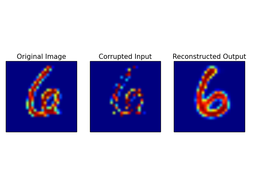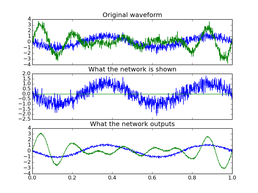
Evander DaCosta
- Position
- Postgraduate Research Student
- Institution
- Electronics and Computer Science (FPAS)
- Contact
- Complete this online contact form to contact Evander.
Hi, I'm Evander, a PhD student with the Institute for Complex Systems Simulation (ICSS) here in Southampton. My research interests include Machine Learning and Bio-inspired computing with an emphasis on Deep Neural Networks.
I am currently working on deep networks as potential system identification tools for neuroscience. Essentially using Artificial Neural Networks to better understand how real, biological neural networks work.
Working with...
 Philip Newland Philip NewlandProfessor, Biological Sciences (FNES) |
 David Simpson David SimpsonSenior Lecturer, Institute of Sound & Vibration Research (FEE) |
Projects
Gallery

A neural network trained completely unsupervised on the MNIST dataset, when shown a corrupted input (middle) of a handwritten digit is able to reconstruct the digit based on what it 'believes' a 6 should look like (right). Notice the differences in stroke width and the defining loop with the original digit (left). The reconstructed image was never seen by the network during training.

An unsupervised neural network shows it is able to extract the features which explain the mapping from the input stimulus to a dynamical system (blue) to its output response (green).
(Top) Noisy test stimulus (blue) and response (green) waveforms
(Middle) Response waveform is hidden from the network by zeroing all values.
(Bottom) Reconstruction from the neural network demonstrates that it knows the mapping, and can also remove a lot of noise from the original waveforms.
